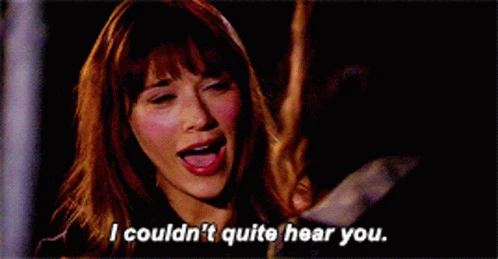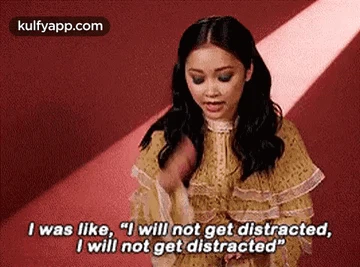Why Is 70% Of Gen Z Using Captions On TV Shows And Movies?
People used to think of subtitles and captions primarily as a tool for the deaf and hard of hearing, a staple of the TV at your grandparents’ house. But in a strange turn of cultural events, times have changed, and now there are far more young people using captions.

According to a recent report by Preply, a whopping 70% of Gen Z viewers report being frequent users of subtitles, compared to a mere 38% of Baby Boomers. According to Stagetext, a charity dedicated to making culture accessible to the hard of hearing, numbers could be even higher than that. Of those polled, 80% of adults aged 18-24 were likely to use subtitles some or all of the time, even though only 10% were deaf or hard of hearing. Among adults aged 56-75, only 23% reported regular use of subtitles – a truly staggering difference. All signs point to the same trend: Gen Z loves to see the words of their videos somewhere written out on the screen.
So what has changed? Why are younger viewers so much more likely to use subtitles than older generations? Here are a few reasons we think that Gen Z is loving captions on their content.
Audio Quality and Streaming Services
The major reason most Gen Z viewers prefer captions is because they can’t hear – but not in the way that you think. It’s not that Gen Z has a statistically higher likelihood of being deaf or hard of hearing – statistically, there’s not a huge difference between generations. According to the Preply report, 72% of Gen Z viewers use subtitles because the audio is muddled and 61% because the actors' accent is hard to understand. It’s hard to hear because the videos aren’t clear and actors are harder to understand.

Some have attributed this to the decrease in sound quality on streaming services. When a film is converted to be available on a streaming service, its audio must be condensed to be available on small devices. This distorts the sounds and makes them hard to distinguish. Additionally, digitized transfers of older content (like your favorite show from the ‘80s or ‘90s) are often botched, leaving muffled dialogue and sound effects.
The growing trend of realism in cinema adds to this problem of not being able to hear as well. When films first began recording in sound, there were strict expectations about clear diction from the actors and crystalline recording of the score and sound effects. As our technology has advanced, though, film and television directors have grown more experimental, with famous directors such as Christopher Nolan refusing to dub their actors’ lines if they come out indistinct in the initial recording. It’s a bold artistic choice, but it makes things hard to hear and, ultimately, keeps the younger generation looking toward subtitles.
ADHD and the Attention Economy
Whether you blame smartphones or a culture of multi-tasking, all the stats point to one fact: the art of managing attention has grown increasingly difficult, especially for Gen Z. Adult attention spans have decreased by more than 25% in the last 20 years. The average Gen Z has an attention span of eight seconds, which is four seconds less than millennials and significantly lower than that of older generations. This matches the increase in reported diagnoses of ADHD and other attention disorders, which has grown to 27% of Gen Z in recent years. The ability to direct your attention for an extended period of time is quickly becoming one of the most valuable skills in the modern economy.

And this is where captions help. Research has shown that the addition of captions or subtitles does not distract the viewer from the video. Instead, they help the viewer retain the information in a video, whether it be the steps of a new recipe or memorable movie quotes. It makes sense that a generation that faces increasingly difficult attention issues would find a way to compensate, and captions are a part of how Gen Z is bridging that gap.
We see this play out on social media as well. Think of that video from your favorite episode of Grey’s Anatomy that catches your eye as you scroll – the audio’s turned off (you’ll have to click on the video to actually hear it), but we still know what’s happening, thanks to the stream of captioned lines running across the bottom of the video. Those captions caught our eye and made us pause to relive the moment.
It’s a clever tactic, and it’s how streaming services determine which content will keep you scrolling. Because the audio is off, people can have their phones out and play videos for hours in public without disturbing anyone on the subway, in the office, or in line to get Starbucks. Just take a look at the science behind Instagram reels, though, and the need for captions becomes crystal clear. The words catch our attention, even if it's from something we’ve never seen before, and keep us watching longer the more we like the content. The longer we watch, the more data has been collected about the kind of thing we like to watch. It’s a cycle that keeps us scrolling – and all because the captions catch our eye and hold our attention.
Gen Z Is the K-Drama Generation
Over the last decade, a new type of television has been taking over streaming services: Asian dramas. Imported from Korea, Japan, and China, Asian television dramas have been capturing the hearts of young people with their engaging storylines, relatively clean content, and more traditional depictions of men and women. Though these shows can often be dubbed in English, the sound does not match up to the picture of the actors speaking, which can be even more distracting than captions. Many viewers opt to keep their shows in the original language and simply turn on the subtitles.

The popularity of shows made in foreign languages has a direct correlation to the increase in subtitle use. Whereas only half of the Gen X and Baby Boomer generations report that they watch media in a foreign language, 76% of Gen Z and millennials said that they consume foreign language content – a statistic that is interestingly similar to that of subtitle users. Because young people are used to watching films and shows in another language with English subtitles, they’ve become more accustomed to having captions on the screen during their movie-watching experience.
Closing Thoughts
Subtitles and captions have become increasingly popular, especially with the younger millennial and Gen Z viewers. Amidst the glut of information that is constantly battling for our ever-decreasing ability to pay attention, the new preference for subtitles is helping to guide the attention of the younger generations and expand their taste in television.
Support our cause and help women reclaim their femininity by subscribing today.